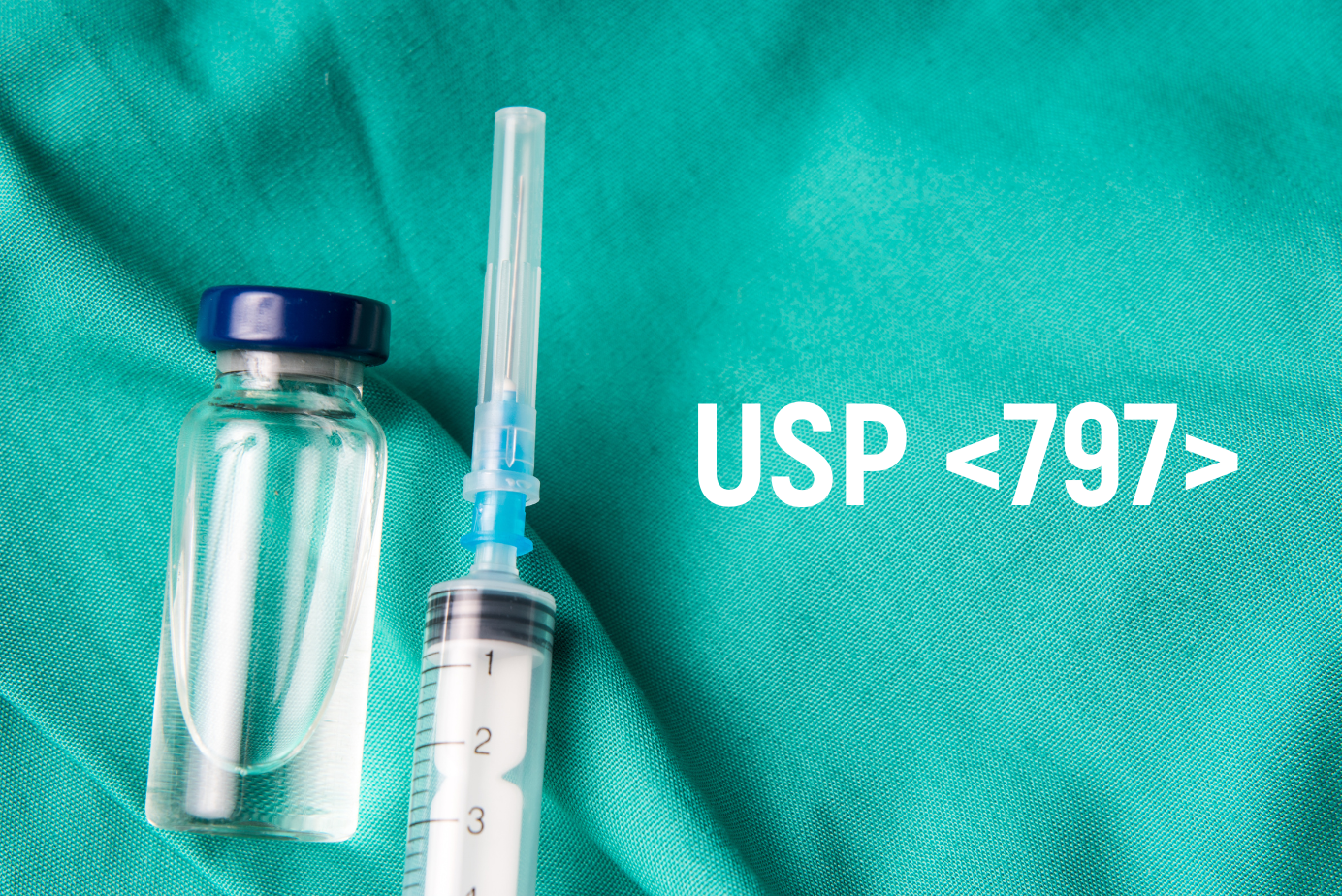USP 797 BUDs: How the 2023 Changes Impact Environmental Monitoring Requirements

In November 2023, significant revisions to the United States Pharmacopeia (USP) General Chapter <797> will go into effect, bringing critical updates to the environmental monitoring standards governing the compounding of sterile preparations. In this post, we delve into the changes to USP 797 BUD standards and how they impact environmental testing requirements.
For more information on the 2023 revisions to USP 797, visit our web page.
What are BUDs?
Beyond Use Dates, commonly referred to as BUDs, are the assigned dates or timeframes after which a compounded sterile preparation (CSP) should not be used. BUDs are determined based on potential for microbial contamination, chemical degradation, or loss of potency, ensuring the compounds administered to patients are both safe and effective.
USP 797 BUDs are established using a risk-based approach that looks at a combination of factors, including the sterility assurance level (SAL) of the compounding process, storage conditions, and the specific ingredients used in the preparation.
It’s important to remember that BUDs are NOT the same as expiration dates. The BUD is the date beyond which a sterile preparation, such as amoxicillin powder mixed with sterile water, must be discarded. The amoxicillin powder itself may have a longer expiration date, but that does not factor into the BUD.
USP 797 BUDs: What’s Changed?
BUDs are directly related to USP 797 Compounded Sterile Preparation (CSP) categories. To understand the changes to BUDs under USP 797, it’s important to first understand how CSPs will change in the revisions taking effect in November 2023. The current version of USP 797 classifies sterile compounds into high, medium, and low-risk CSPs. This terminology is being replaced by Category 3, Category 2, and Category 1, respectively. The USP 797 BUD chart below shows how BUDs have changed by CSP Category.
|
Risk Level |
Category |
Previous BUD specifications |
Revised BUD specifications |
|
Low |
1 |
48 hours at room temperature; 13 days refrigerated; 45 days frozen |
≤ 12 hours at controlled room temperature; ≤ 24 hours refrigerated |
|
Medium |
2 |
30 hours at room temperature; 9 days refrigerated; 45 days frozen |
> 12 at controlled room temperature; > 24 hours refrigerated |
|
High |
3 |
24 hours at room temperature; 3 days refrigerated; 45 days frozen |
BUDs may be longer but can vary based on the specific conditions and requirements of the CSP. Sterility and endotoxin testing requirement. |
Compounding pharmacies and other entities compounding sterile preparations have until November to implement these changes. However, the sooner they begin, the easier it will be to ensure you have enough time to adjust policies, procedures, and staff training to comply with the new requirements. Waiting until November could result in non-compliance, putting patients at risk and possibly leading to regulatory consequences.


.png)